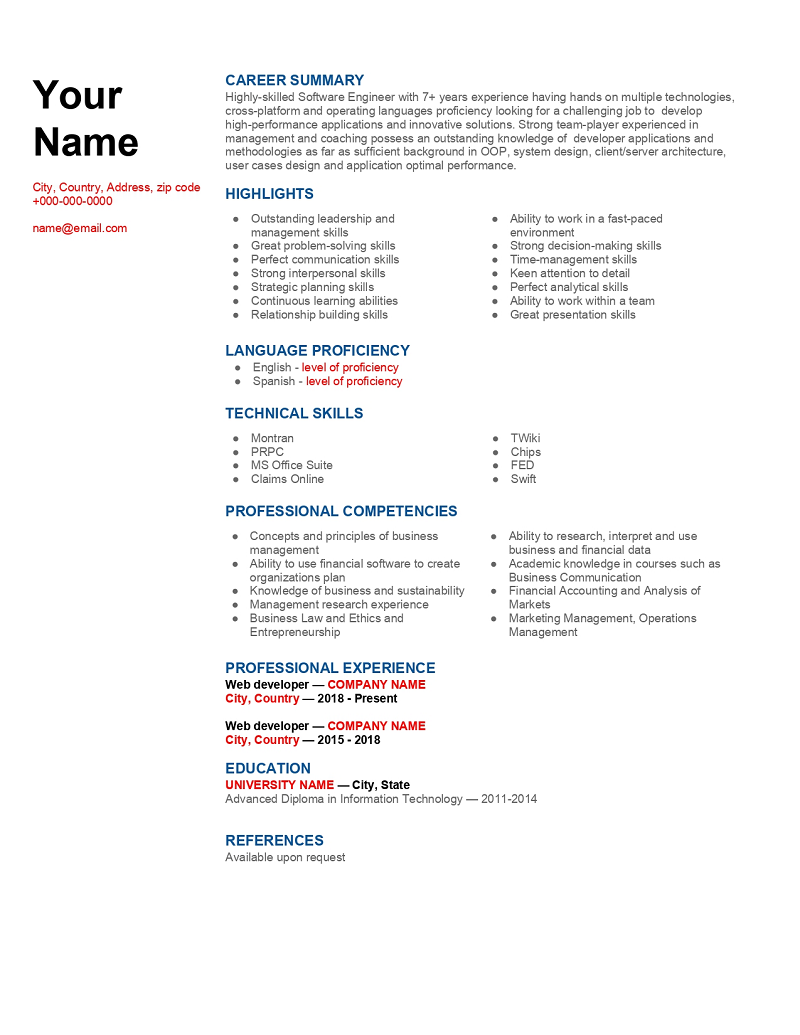The job hunt is never easy. It takes a lot of time and efforts to create a resume that will impress recruiters and make them want to invite you for an interview. But what if your resume employment history is far from perfect? Some of us can take some time off from work for different reasons. Some people take this time to raise a child, finish their education, travel abroad. Some people got laid off or even fired from a previous job and it took a few months to find a new one. What is the perfect way for explaining gaps in employment? We will show you how to create a consistent resume that will demonstrate that you are a reliable professional who is a perfect fit for a job.

Use dates on a resume wisely
If you’re wondering how to explain gaps in employment, the main advice is to stay honest. You don’t have to lie on your resume. Anyway, recruiters will find out about employment gaps and in this case, it would be even worse for you. However, some effective ways will help you to attract recruiters and increase your chances of getting a job.
First of all, there are no strict requirements for including all your job history especially if you’ve been in the workforce for decades. If you are looking for a senior/middle level position then your experience on entry-level jobs that are outdated or don’t correlate with your current career field won’t be relevant.
The easiest way to cover up your recent employment gaps on resume is to avoid mentioning exact months of employment. When you list dates of employment on your resume, you do not necessarily have to list the month/year in case you worked for more than one year.
For example, you can include it like this:
Account Manager - XYZ Company
Boston, MA - 2016 - 2018
Instead of this:
Account Manager - XYZ Company
Boston, MA - January 2016 - August 2017
If you omit months in dates on your resume you will be able to hide and fill the gap. Then if you were unemployed till December 2017, you could easily list it as 2017 and this gap in resume won’t be obvious to recruiters.
Head of Marketing - XYZ Company
New York, NY - 2018 - Present
Marketing Manager - XYZ Company
New York, NY - 2015 - 2018
Add other professional experience
You can fill the gap in employment history with other activities you have performed during your pause. If you have done some freelance, consulting or volunteering, it will definitely matter in your resume. It will cover gaps in resume and demonstrate to a hiring manager that you didn’t waste your time but kept improving your professional skills or contributed to society. This info can be definitely included in a resume. List the experience as if you would list the common work experience. Include company/organization title, dates and list your main duties, responsibilities and your contribution or accomplishments. If you have undergone some professional training, include your certificates and knowledge gained during classes. Everything will explain gaps in employment and is worth putting on your resume.
“After a successful job performance as a Marketing Manager for XYZ company, I took maternity leave, and then completed my professional certification. During that period, I decided to take my career to the next level and used this time also for developing the skill set needed to succeed on this role.”

Put emphasis on your strengths
By adding a resume section called “Career summary”, you can highlight all your core skills and professional knowledge and briefly describe your main career achievements. It will draw recruiter’s attention to your profile.
In case you stayed at home for a long time and want to make your application as strong as possible, you can create a cover letter for long term unemployed. The best strategy to cover up your career gaps is to create a compelling story and provide some details about your value as an employee and as a professional. The main purpose of this cover letter is to highlight your main strengths.
Recruiters don’t care much about eventual gaps in your career. What matters to them is what contribution you can bring to their team and what abilities and qualification will allow you to perform your duties effectively. A successful cover letter will not just describe your expertise and abilities but their possible implementation in the company you want to apply for. Remember that a cover letter should sell you and your skills. Once again you can additionally describe how you have spent time off from work and how you have used this time to improve your professionalism.
Try different resume format
It’s worth mentioning that there exist three main resume formats - chronological, functional and combination resume. Most likely you have heard only of a chronological resume. In this case, your job history is obviously listed chronologically. Most recruiters prefer a chronological resume to functional one but it’s highly recommended to try out functional resume format to make your gaps less obvious. This resume format is perfect as the focus shifts from your professional experience to skills and knowledge that you have gained during your career life. You still have to list your previous employment but take into consideration our abovementioned advice regarding eliminating months in dates.
While creating your resume and listing your skills you should use an employer’s job description because it includes all the important keywords a hiring manager will seek in your resume. Focus on skills that are the most relevant to the desired job opening. Concentrate not on your career gaps but on demonstrating how qualified and skilled you are for the job even despite some time off from work. Recruiters will appreciate it more rather than a dry list of job titles.
Resume with gaps in employment sample
Here is a great example of a functional resume that will be perfect if you have some employment gaps.
